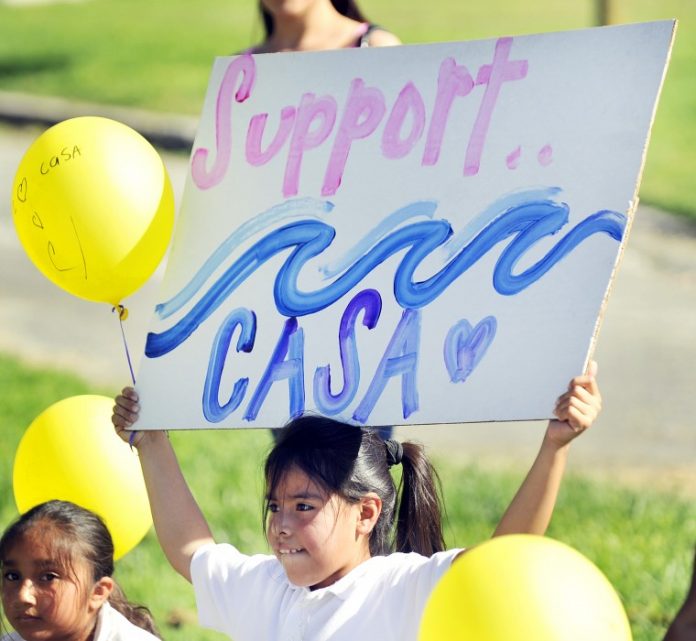
When the Youth Alliance staff members first joined the tri-county “La Cultura Cura” network with agencies from Monterey and Santa Cruz counties in 2009, the local nonprofit had been searching for a good gang prevention curriculum.
“We had curriculum that taught life skills and had good discussions, but it missed getting to the core,” said Diane Ortiz, the executive director of the Youth Alliance. “It didn’t deal with absent fathers, parents in prison. … It was not getting to the heart of it.”
Staff members from the Alliance sought out training from Jerry Tello, who founded the National Compadres Network 30 years ago and who developed a methodology called “La Cultura Cura,” or the Cultural Cure.
“We work with a whole host of partners – it’s community based,” Tello said on a phone interview from his base in Los Angeles. “From library staff to probation to social services practitioners to drug and alcohol counselors and violence prevention counselors – we’ve covered a wide gamut of people.”
Tello’s methods tie in easily with local efforts, which often include collaborations among San Benito County’s Probation Department, San Benito County Office of Education, behavioral health and nonprofits such as Youth Alliance.
Tello said though there may be a lot of pain, dysfunction and fear in some families or communities, there are positive assets that are carried from generation to generation.
“If they are surviving every day, and dealing with pains and wounds, they don’t get the opportunity to build on their cultural pride or the true sense of the value,” he said.
Ortiz said the philosophy has allowed her staff to look at intergenerational and multigenerational issues when they work with individual students.
Juan Gomez, a senior consultant with the National Compadres Network, was one of the people instrumental in connecting the Youth Alliance with other agencies using Tello’s methods.
“There is a highly populated Latino community and a highly populated migrant community,” Gomez said. “(But the services) came from models that were not reflective of the diversity of the community.”
The Youth Alliance has offered the El Joven Noble rites of passage program to male students, Xinchatli rites of passage for female students, Corazon for parents, and a teen parent component as well.
“It goes beyond cultural competency and is used to engage youth and families,” Ortiz said.
Victoria Valadez, director of youth services for Youth Alliance, said the programs are complementary because they “wrap that support around the youth to create positive connections.”
Valerie Medina, a case manager, works with 20 San Benito High School students each year who are identified by support managers at the school. During the first half of the year, the girls focus on their own experiences while the second part of the year they get involved in community service.
Medina said the students made signs for the recent “Walk a Mile in Her Shoes” event sponsored by Emmaus House and Community Solutions to prevent violence against women.
Ortiz said though the philosophy was developed to work primarily with minority youths, they have worked with students from a variety of backgrounds.
“It is something that is applicable across cultures,” Ortiz said. “It is always our goal never to make anyone feel ‘less than’ for not being something, whether it is youth who are LGBTQ or from different cultures or countries.”
Medina said she is working with three girls who are not Hispanic.
“They love it and their parents love it,” she said.
Ramon Carvajal, a case manager with the Familia program, said there is a misperception that the youths in the program are in trouble or on probation.
“The point is to build strong leaders and strong young men and women,” he said.
Carvajal said the young men with whom he works often start out quiet before they really begin to embrace the discussions, while Medina said the young women with whom she works are often outspoken from the beginning.
One of the next goals is to connect the students with mentors, who can attend events and activities to show students what they can achieve in the future. While it won’t be a one-on-one mentorship relationship, the goal is to connect the students to role models in the community.
“It would be nice to have that support from other responsible adults,” Valadez said.









